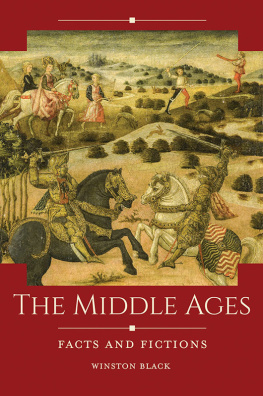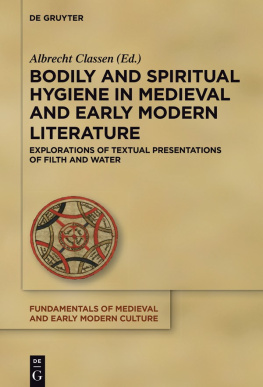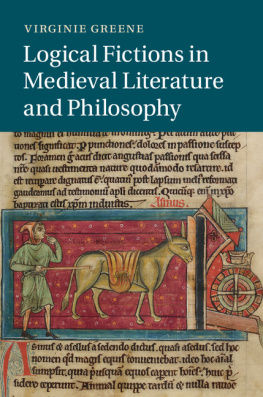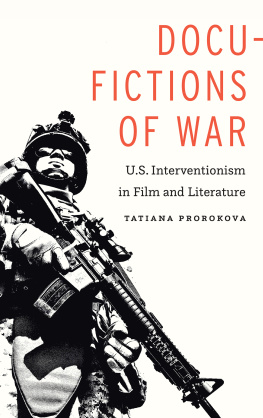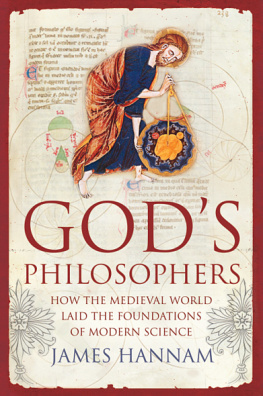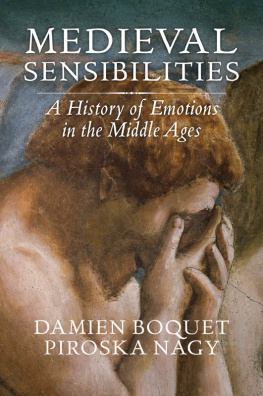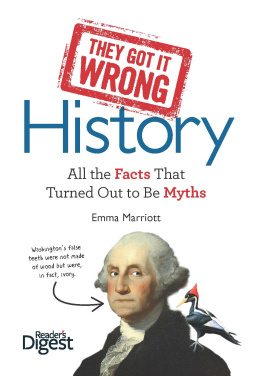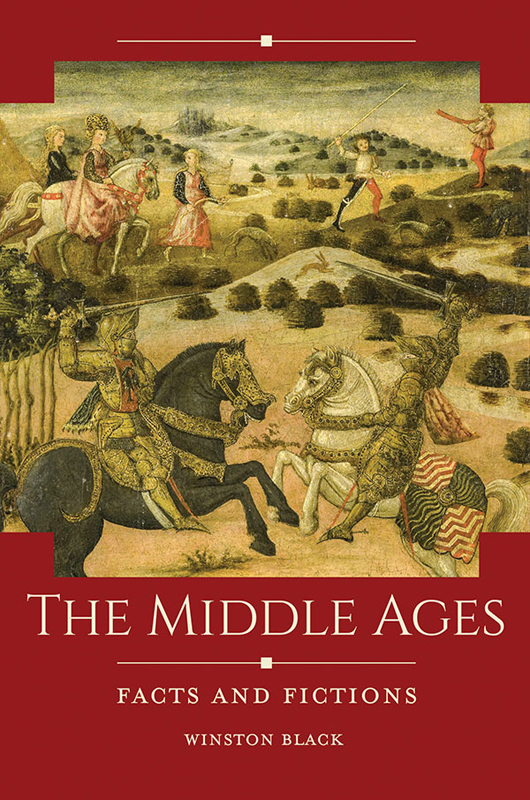The Middle Ages
The Middle Ages
Facts and Fictions
Winston Black
Historical Facts and Fictions

Copyright 2019 by ABC-CLIO, LLC
All rights reserved. No part of this publication may be reproduced, stored in a retrieval system, or transmitted, in any form or by any means, electronic, mechanical, photocopying, recording, or otherwise, except for the inclusion of brief quotations in a review, without prior permission in writing from the publisher.
Library of Congress Cataloging-in-Publication Data
Names: Black, Winston E., 1977 author.
Title: The Middle Ages : facts and fictions / Winston Black.
Description: Santa Barbara, California : ABC-CLIO, 2019. | Series: Historical facts and fictions | Includes bibliographical references and index.
Identifiers: LCCN 2019011697 (print) | LCCN 2019013002 (ebook) | ISBN 9781440862328 (eBook) | ISBN 9781440862311 (hardcopy : alk. paper)
Subjects: LCSH: Middle Ages. | Civilization, Medieval. | HistoryErrors, inventions, etc.
Classification: LCC D117 (ebook) | LCC D117 .B49 2019 (print) | DDC 940.1dc23
LC record available at https://lccn.loc.gov/2019011697
ISBN: 978-1-4408-6231-1 (print)
978-1-4408-6232-8 (ebook)
23 22 21 20 19 1 2 3 4 5
This book is also available as an eBook.
ABC-CLIO
An Imprint of ABC-CLIO, LLC
ABC-CLIO, LLC
147 Castilian Drive
Santa Barbara, California 93117
www.abc-clio.com
This book is printed on acid-free paper 
Manufactured in the United States of America
Every reasonable effort has been made to trace the owners of copyright materials in this book, but in some instances this has proven impossible. The editors and publishers will be glad to receive information leading to more complete acknowledgments in subsequent printings of the book and in the meantime extend their apologies for any omissions.
Contents
People invent fictions about every period of history as they reshape the past to their own liking. Perhaps no other historical era has been misunderstood and reinvented as much as the Middle Ages. In the millennium between the fall of the Western Roman Empire in 476 and the first Atlantic voyage of Columbus in 1492 (or you can choose other events around 500 and 1500 CE), you can find a vast range of cultures, ideas, individuals, or events that have been used to represent the essence of the Middle Ages. Attila the Hun, Joan of Arc, Charlemagne, or Dante: each of these people has been used to define medieval. Likewise, barbarians or knights in shining armor, filthy hovels or towering cathedrals, brutal tyrants or parliamentary governments, and the violence of the Crusades or the pacifism of St. Francis can legitimately evoke key aspects of the Middle Ages. The historical problems begin and fictions are created when authors, teachers, journalists, and scholars choose just one of these medieval images to represent the entire medieval millennium.
This book introduces eleven fictions about the European Middle Ages that have developed and persisted throughout the last two centuries or more. Others could have been included, especially if we expanded medieval to include the premodern Islamic world and other cultures contemporary with medieval Europe. Entire books have been written to challenge errors about the history of the Crusades or the place of women in the Middle Ages, issues that are covered here in specific cases. The eleven fictions were chosen to cover the entire Middle Ages and to touch on issues big and small, from specific myths about individuals to broad fictions about the very meaning of medieval. Most of these fictions are extensions of the big myth introduced in the first chapternamely, that the Middle Ages were nothing but the Dark Ages. Imagining the medieval era as a prolonged Dark Age helps preserve a sense of continual progress in history: the Renaissance improved on the Dark Ages, the Enlightenment on the Renaissance, the modern era on the Enlightenment, and so on. Acknowledging that some parts of the Middle Ages might have been better than periods that came afterward can be difficult for many people to accept. What does that say about our own twenty-first century? Could later historians see it as a step backward from the twentieth?
Each chapter addresses a commonly held misconception about the Middle Ages, first summarizing the core elements of the fiction. After that are two longer sections: first, on how the fiction developed, became popular, and spread; and second, on how we can correct the misconceptions. Both sections are accompanied by primary sources, documents, and images from the past, which provide evidence for the fiction and the fact. Some of these sources are medieval, many of them are from the nineteenth century (a period that produced many of our medieval myths), and some even come from books and websites of the twentieth and twenty-first centuries as we trace the authors who perpetuate these fictions and the scholars who try to correct them.
I would like to thank George Butler of ABC-CLIO, who invited me to write this book, Cindy Crumrine for her careful copyediting, and my medieval history students at Clark University, who have been eager to share their own preconceptions about the Middle Ages, both fictional and factual.
Winston Black
Worcester, Massachusetts
December 2018
The fact is that everyone has his own ideas, usually corrupt, of the Middle Ages.
Umberto Eco, Reflections on The Name of the Rose (1985)
The Middle Ages are all around us in the modern world, once you start looking: not the historical Middle Ages but medieval as a metaphor for a time and a culture that is related to ours but is clearly not now. This metaphorical Middle Ages is partly shaped by genuine medieval history, but it shapes, in turn, how we study the medieval past. It provides a style, a look, or a setting in books, movies, television shows, and video games that is readily understood. The Lord of the Rings, The Chronicles of Narnia, Dungeons & Dragons, Game of Thrones, Harry Potter, Assassins Creed, The Legend of Zelda, Warcraft, and even Star Wars draw on stereotypically medieval ideas and imagery and frequently encourage people to learn more about the real Middle Ages.
Long before these modern creations, popular views of the Middle Ages were shaped in the eighteenth and nineteenth centuries by stories of Robin Hood and King Arthur, the chivalric novels of Walter Scott, and the art and literature of the Gothic Revival and Pre-Raphaelites. Their fanciful creations continue to shape our expectations of a properly medieval story or history: castles, kings and queens, knights on horseback, feudalism, downtrodden peasants, primitive technology, widespread disease and plague, magic and superstition. A typical medieval setting is usually a fantasy vision of Western Europe (and usually just England and France), including only white people as central and good, only men as the leaders and women as helpless and in need of rescue, and the central religion reflecting Christianity or a pre-Christian northern polytheism (such as Thor, Odin, and company). In the last few decades, the Middle Ages in popular culture have become synonymous with graphic violence, including brutal warfare, rape, torture, widespread censorship, and the slaughter of non-European or non-Christian groups. Viewers know what to expect when they see that Mel Gibsons

